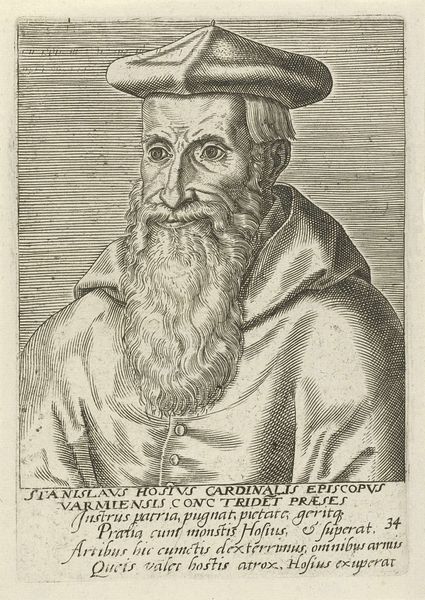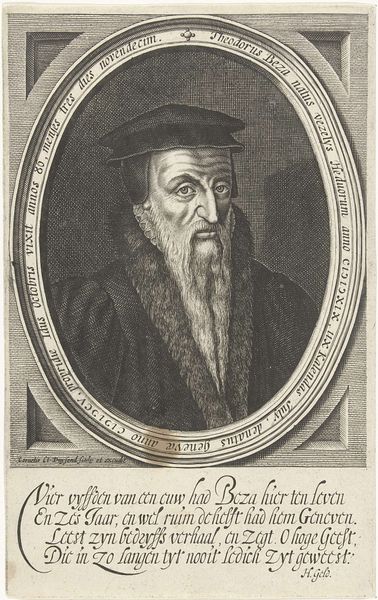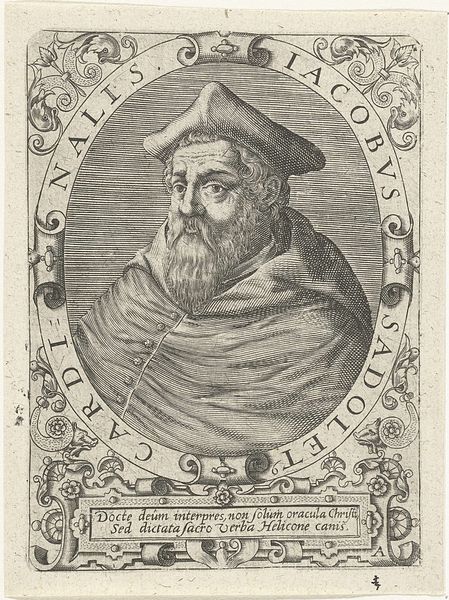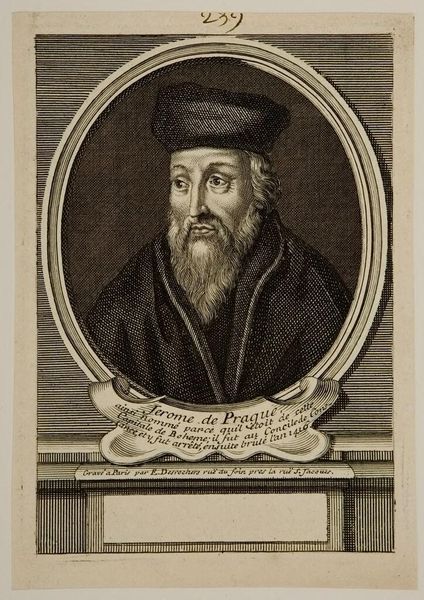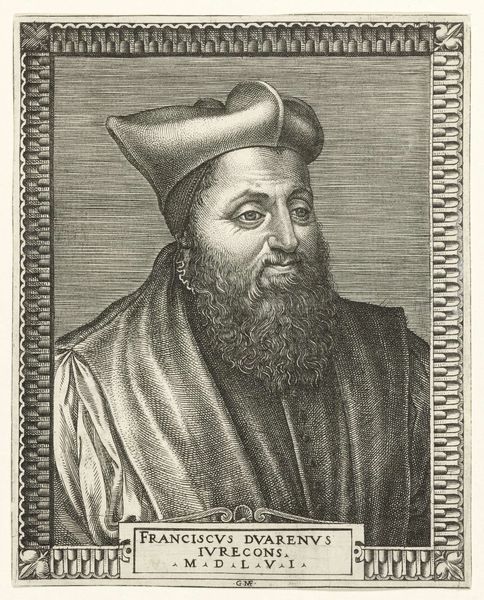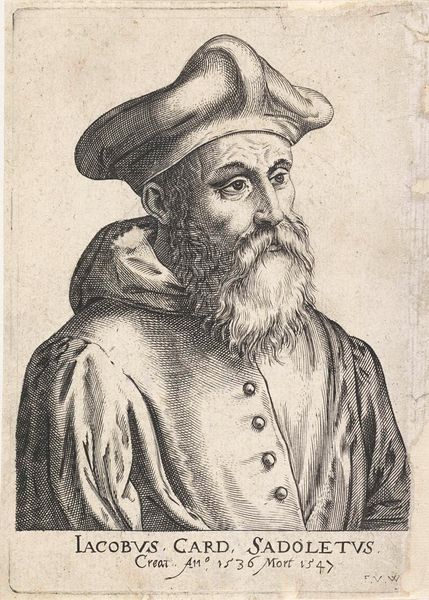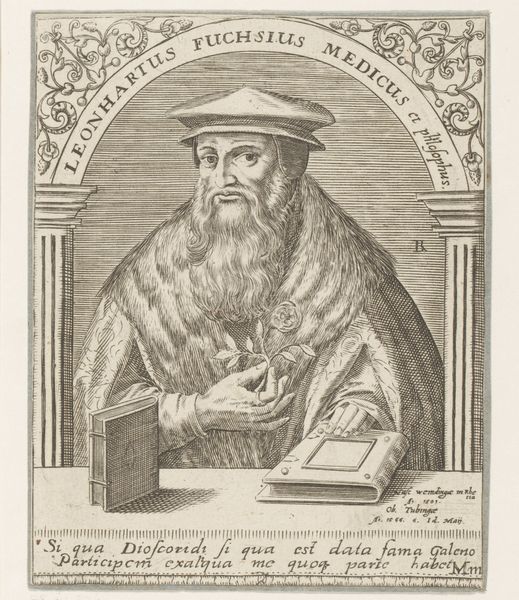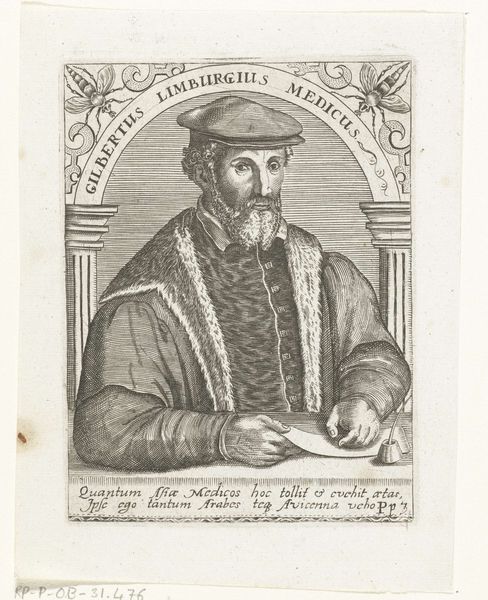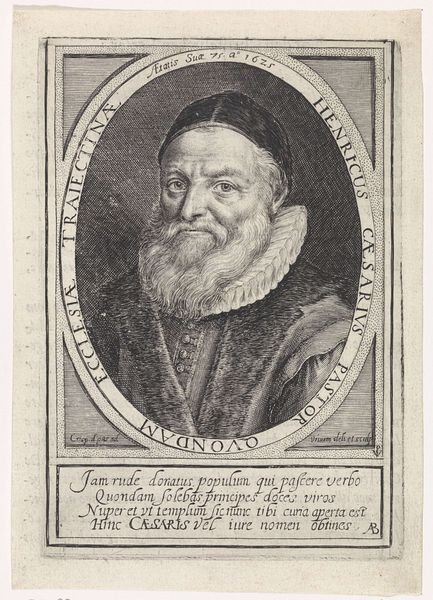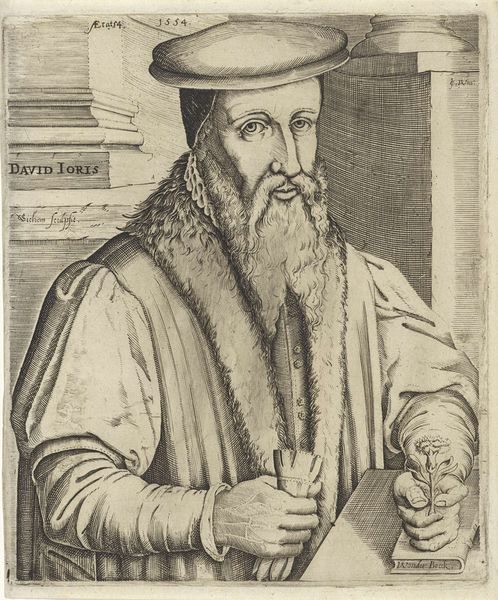
engraving
#
portrait
#
old engraving style
#
mannerism
#
portrait reference
#
limited contrast and shading
#
portrait drawing
#
history-painting
#
engraving
Dimensions: height 170 mm, width 119 mm
Copyright: Rijks Museum: Open Domain
This engraving of André Tiraqueau was made by Philips Galle around 1600. The choice of engraving as a medium and its presence in the Rijksmuseum tells us a lot about the institutional history of art. Galle was a print publisher in Antwerp at a time when the technology of printmaking was changing the nature of artistic production. The relatively low cost of printmaking meant that images could be reproduced and circulated widely, and the art market itself was changing to accommodate a new class of consumer. The image creates meaning through the visual codes of the time, like Tiraqueau’s hat and fur-lined robes, which signify his social class and status as a legal scholar. The Latin inscription connects him to a classical tradition of learning and governance. A historian can tell us more by researching the biography of Tiraqueau and the professional networks of Galle. Understanding the social conditions that shaped this image can tell us about the changing role of art at the beginning of the modern era.
Comments
No comments
Be the first to comment and join the conversation on the ultimate creative platform.
